One-hundred-plus-year-old heritage homes perched on the hillside. Decorative, Victorian-style buildings standing strong in the commercial core. Historic cemetery sitting high above town. So many stories waiting. Join us with maps in hand as we begin piecing together a unique, self-guided walking tour of Nelson, British Columbia.
Disclosure: This post contains affiliate links. If you buy something from one of our affiliates, we receive a small commission at no extra charge to you. We appreciate your support!
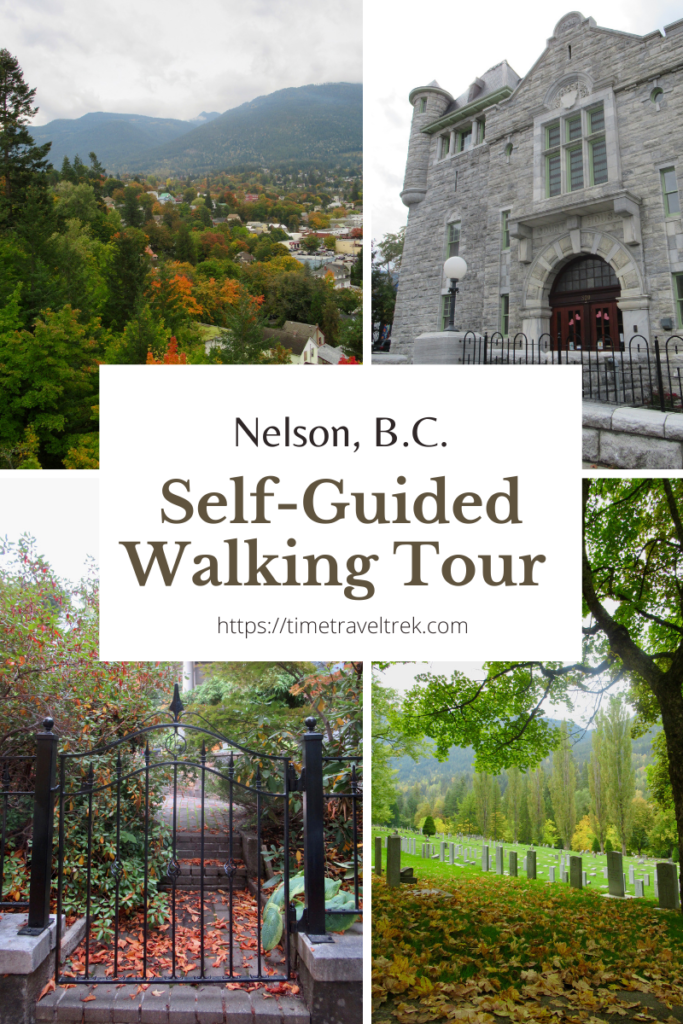
Table of Contents
Nelson’s Heritage in Brief
Nelson, British Columbia is in the Kootenays. It is among the Purcell, Selkirk and Monashee mountains. These mountains contained large deposits of gold, silver, galena and copper. In 1886, miners began working the Silver King mine on Toad Mountain above the current location of Nelson.
Most of the mountains and waterways run north-south in the Kootenays. Travel to the United States was easier than it was to the rest of Canada. Canadian mines in the Kootenay region became directly linked with American interests based in Spokane. Railways and boats on lakes and rivers were the main transportation routes. Nelson was a terminus for most of these routes. The town quickly became the commercial capital of the area.
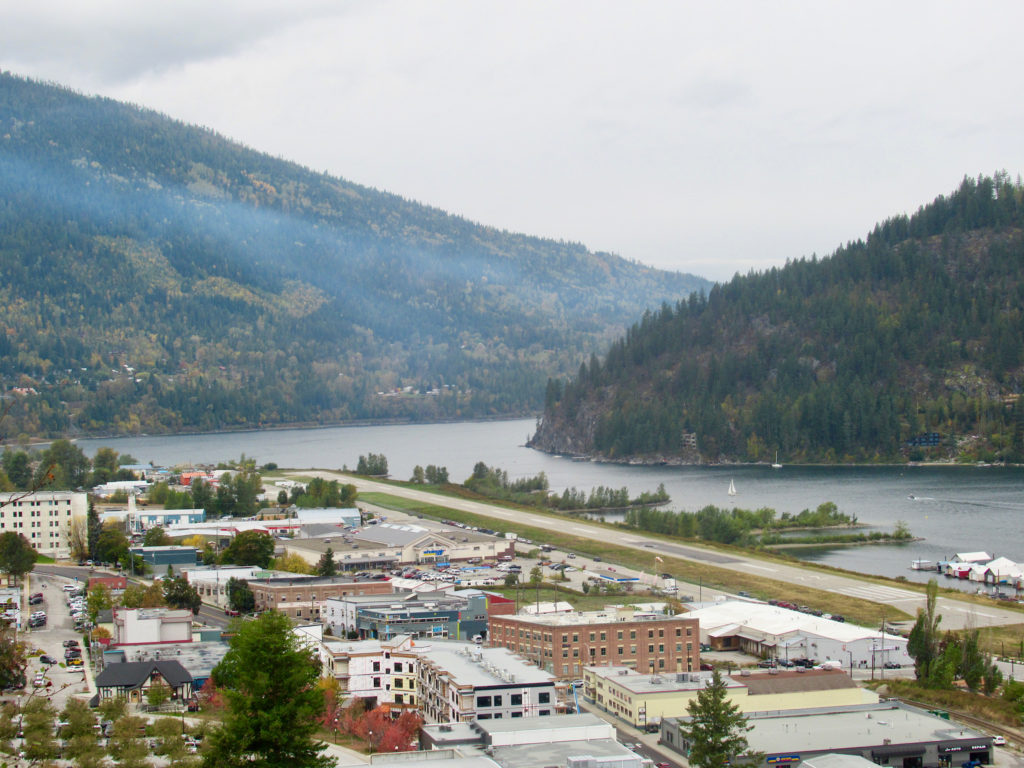
The 1890s were boom years in the Kootenays. Nelson began on the lakefront and grew up the hillside. Vernon Street became the administrative centre. Baker Street became the main commercial district. Residences were above Baker, in the Uphill District.
Neighbourhoods were laid out in a grid pattern. It didn’t matter it it meant going straight uphill. Retaining walls created terraces for home construction. Steps and pathways allowed people to travel up and down the hillside to their homes. The city has over 350 designated heritage buildings. Understanding the backstory behind this treasure trove helps create a clearer connection to the past.
Creating a Walking Tour of Nelson, BC
No secret – I love walking and I love creating self-guided walking tours. Nelson is the perfect fit. There are several walking tour guides available online and from the Nelson Visitor Centre. The VC is located at the bottom of Baker Street in the old Railway Station – itself built in 1900 and on the Canadian Register of Historic Places. The most popular guide we found is the Walking Tour of Nelson’s Heritage Buildings (available online). It includes 27 buildings within one block of Baker Street. It’s good, but it didn’t cover the heritage homes, so I kept digging.
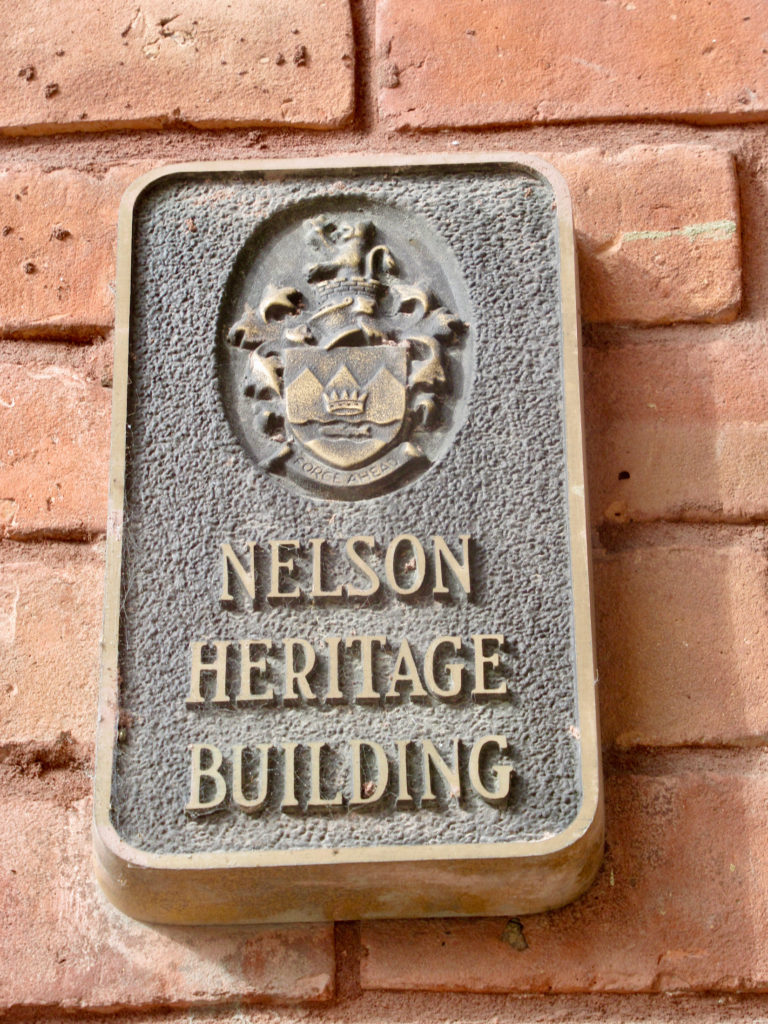
There is a Heritage Motoring Tour guide. I couldn’t find it online but picked up a copy from the Visitor Centre. It also has 27 entries, most of which are different than the first tour. It’s good, but didn’t cover the historic cemetery, so I kept searching until I had copies of all three tours in my hands. I also went online and found another excellent source of information in the blog “When Walls Talk” by Patricia Rodgers.
After reading everything and making a few notes, we contacted a friend who was born and raised in the area. We asked if he’d have time and be interested in showing us around his “backyard.” In the end, we put it all together and came up with our own walking/driving tour.
Searching for Connection
It’s all about the story. Who lived here and why do we care? I love finding connections from place to person. In Nelson, I found several. The first was John Houston.
John “Truth” Houston started the city’s first two newspapers. He was a champion for workers and miners, tirelessly promoted Nelson’s resources, recruited the first doctor and helped establish a school. Houston was instrumental in establishing the Nelson Electric Light Company. In 1897, he became Nelson’s first mayor and eventually went into provincial politics. He dabbled in real estate and built the brick and marble Houston block on Baker Street, dubbing it “Houstonian” in architectural style.
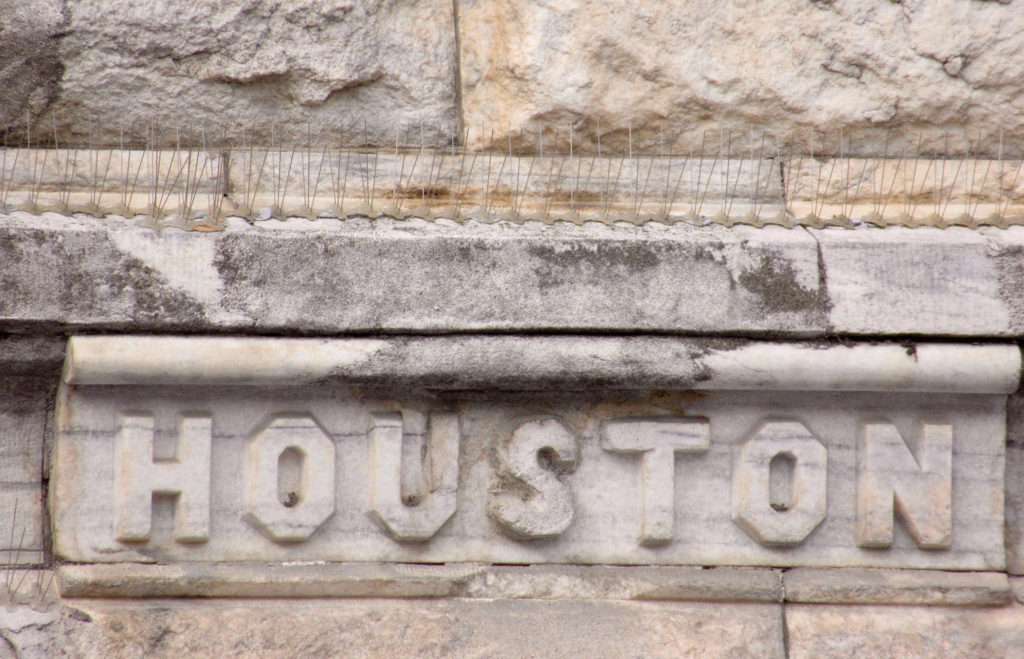
John Houston apparently also loved to drink, sometimes a little too much. In 1905, he up and disappeared – even his wife didn’t know his whereabouts. Houston eventually turned up in Nevada. He resigned as Nelson’s mayor. Five years later – and four days before his actual death from pneumonia – Houston’s obituary was published in The Vancouver Daily Province.
“Don’t be putting in any correction,” Houston wrote the paper in response to the error, “I’ll make good on the story.”
He is the story – a charismatic character from the past who helped make Nelson what it is today. Our tour – detailed below – includes Houston’s grave, the Houston family home, Houston Block and the Houston Memorial.
The Second Story
The second story that caught my eye was that of Alexander Carrie. He wasn’t as flamboyant and vocal as Houston, but his attention to detail made Nelson a visual delight. Carrie was one of the most prolific and important local architects in the city.
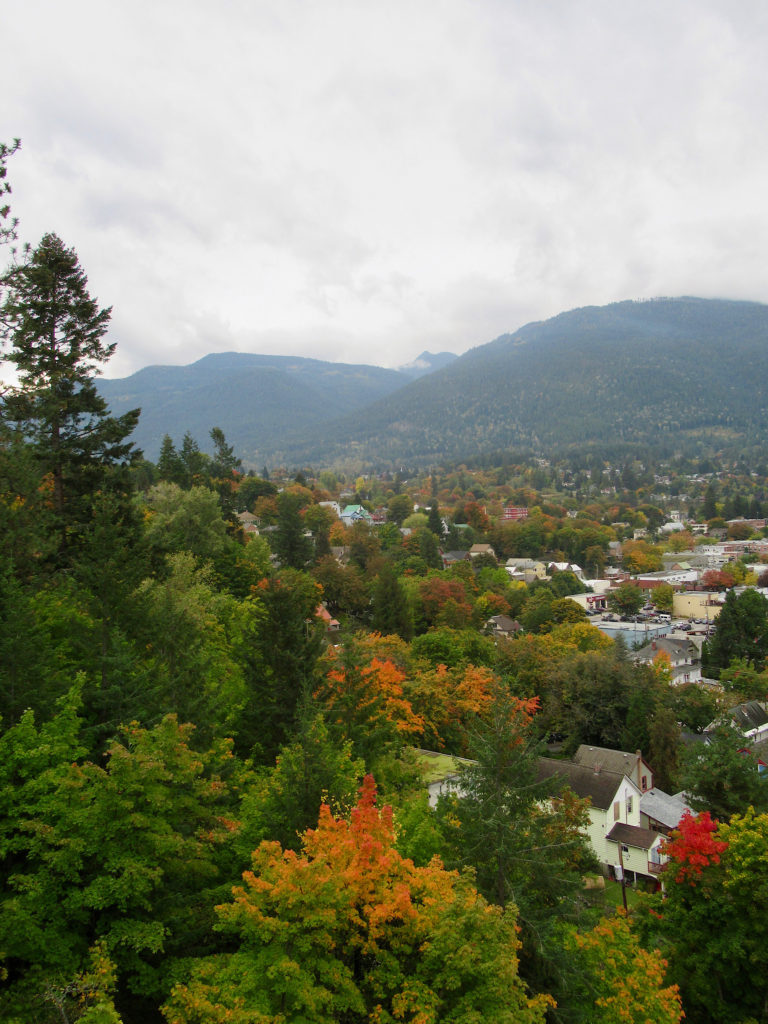
Alexander Carrie arrived in what was to become Nelson on April 17, 1895. One week later, he found a job and within a year was married. He designed hundreds of commercial and residential buildings in Nelson and area – including 11 of the 27 buildings on the local walking tour. Carrie was a man of action. In 52 years, he left an indelible mark on the city landscape. Alexander Carrie’s last blueprint was completed on July 21, 1947. He passed away eight days later.
His grave is not included in the Nelson Cemetery Walking Tour – although he is buried there – and his home is not highlighted in the Heritage Motoring Tour. I decided to include a wide selection of his work – including the Courthouse (where Carrie was Clerk of the Works for architect Francis Rattenbury), Hume Hotel (Supervising Architect), the Land Registry Office, McDonald Jam Factory and the CPR District Superintendent’s house.
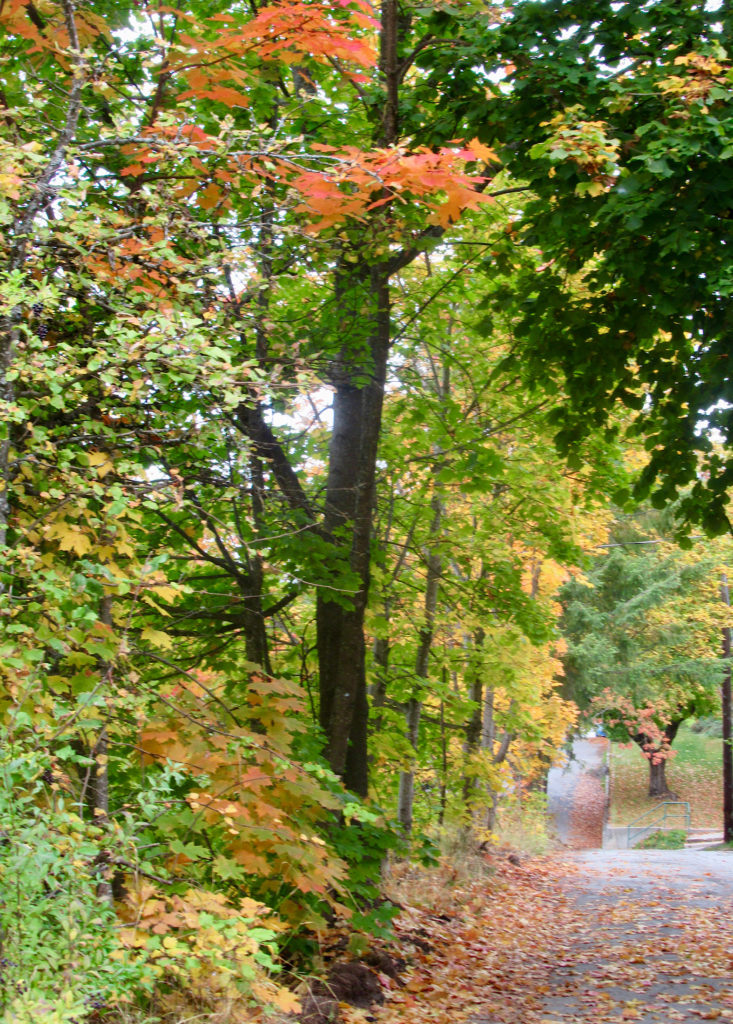
A Hotelier, a Brewer and a Couple of Physicians
It may seem like a random cross-section of the population, but J. Fred Hume, R Riesterer and Dr. Edward Charles Arthur and Dr. Isabella Arthur were all prominent citizens in Nelson’s past. In fact, I think the Arthur’s story is one of my favourites. All of these people are mentioned in the Nelson Cemetery Tour. They are all associated with heritage buildings still existing in the Uphill district of the city today. The tour includes Hume’s home, the hotel bearing his name, Riesterer’s brewery and the story behind the Arthur’s home on Silica Street. It’s now time to finish writing the tour specifics and pull these stories together!
The Specifics of Our Walking Tour of Nelson!
Now that you’re familiar with the backstory, read on for the stop by stop details. The second half of this adventure with our complete self-guided tour of 15 stops and an orientation map is ready to walk!

You don’t mention the most nationally significant Nelson resident – Joseph Patenaude. He’s in the Cemetary. Contact me for more info.
Would love to learn more about why he’s the “most nationally significant Nelson resident” – thanks!
I put all your posts in a file for future reference. Keep it up!!
Thx Rande; will do!
Wow, making self-guided walking tours is such a great idea!
And I bet the research process is as exciting as the result!
Thanks Ivan! I’ve got admit that research (on foot and online) is my favourite part!
I, too, enjoy walking tours, and there’s nothing better than learning the story behind each building and marker. I love the stories you’ve shared here, and wish you the best at designing future walking tours for others to enjoy!
Thanks Tamara! There may one or two walking tours coming down the pipe over the winter 😉